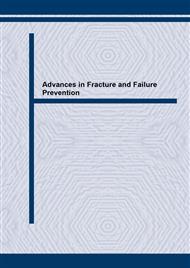p.919
p.925
p.931
p.937
p.943
p.949
p.955
p.963
p.969
Effects of Dissolved Hydrogen on the Primary Water Stress Corrosion Cracking Behavior of Alloy 600 at 325 °C
Abstract:
Primary water stress corrosion cracking (PWSCC) of Alloy 600 has been a great concern to the nuclear power industry. Reliable PWSCC growth rate data, especially at temperatures in the range of 290-330°C, of the alloy are required in order to evaluate the lifetime of power plant components. In this study, three tests were carried out in simulated pressurized water reactor (PWR) primary water at 325°C at different dissolved hydrogen (DH) concentrations using standard one-inch compact tension (1T-CT) specimens. The initiation and growth of cracks as well as insights into the different PWSCC mechanisms proposed in the literature were discussed. The experimental results show that the detrimental effects of hydrogen on crack initiation and growth reached a maximum at a certain level of DH in water. The experimental results were explained in terms of changes in the stability of the surface oxide films under different DH levels. The experimental results also support the assumption that hydrogen absorption as a result of cathodic reactions within the metal plays a fundamental role in PWSCC.
Info:
Periodical:
Pages:
943-948
Citation:
Online since:
April 2004
Authors:
Price:
Сopyright:
© 2004 Trans Tech Publications Ltd. All Rights Reserved
Share:
Citation:


